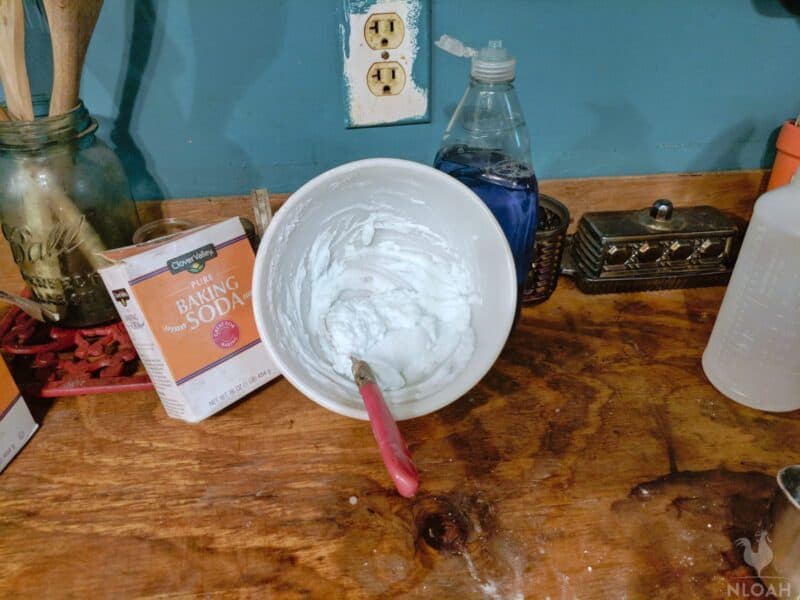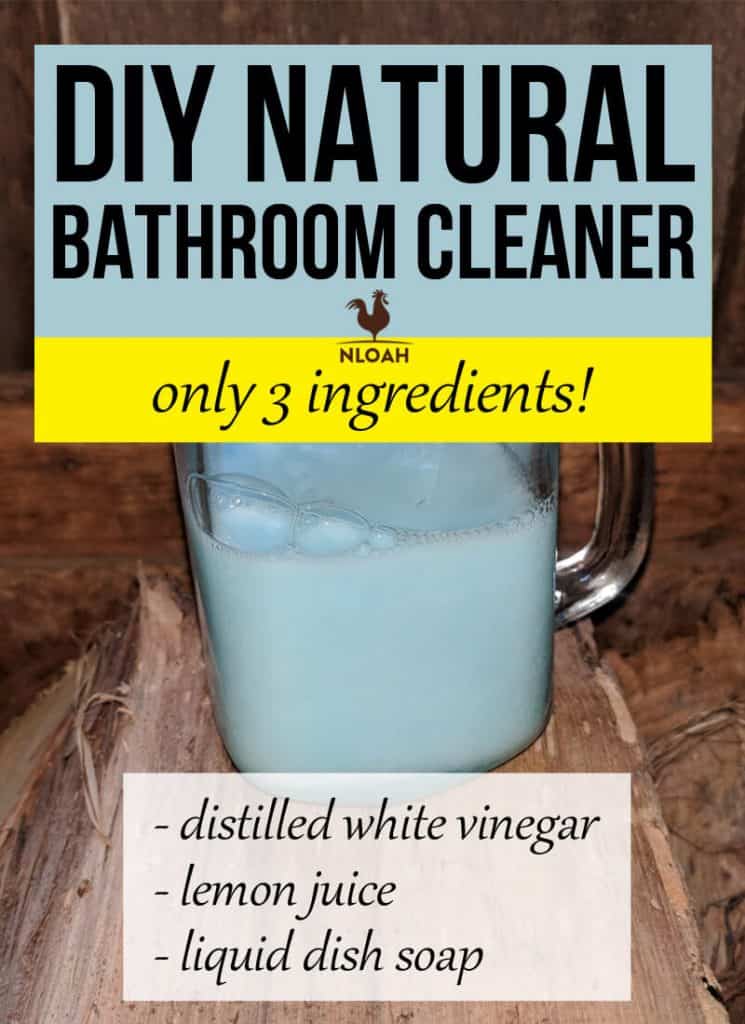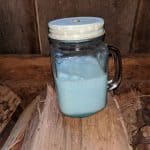DIY all-natural all-purpose bathroom cleaners cost only pennies to make, and do not release potentially harmful or fumes waft inside of your home.
Because of proprietary laws, manufacturers are not even required to tell us exactly what goes into many of the cleaning products, air fresheners, and fragrances that might be sitting in your cabinet right now.
Some all purpose bathroom cleaners could cause headaches when inhaled, or irritation to the throat and eyes. Volatile organic compounds, or VOCs, are dangerous chemicals that are found inside a myriad of popular manufactured cleaning products.
Exposure to ammonia and bleach fumes may also cause negative health effects over time. According to a HealthLine report, some researchers believe exposure to chemicals in some household cleaning products could cause as much damage to your lungs as smoking.
Potentially Harmful Chemicals Commonly Found in Bathroom Cleaning Products
Phthalates
This set of chemicals may be endocrine disruptors. According to the CDC and a Harvard School of Public Health study, phthalates could reduce sperm count in men that have high compounds of the chemical in their blood.
It is doubtful, thanks to proprietary laws, that you will even know if your current all-purpose bathroom cleaner contains phthalates. If the label notes this simple word somewhere in the ingredients list, “fragrance,” odds are good that phthalates are also contained in the cleaning product recipe. Phthalates typically get into our body either by inhaling them, or via skin contact.
2-Butoxyethanol
This chemical is often found in multi-purpose household cleaners, as well as kitchen and window specific cleaners. 2-butoxyethanol omits a sweet smell and is considered a glycol ether – a powerful series of solvents. Current laws do not require manufacturers to note that a product contains 2-butoxyethanol on the label.
When inhaled, 2-butoxyethanol may cause a sore throat, and contribute to the develpment of liver damage, narcosis, kidney damage, and pulmonary edema.
Triclosan
This chemical is most often found in cleaning products, especially hand soaps and dishwashing detergents that are labeled as being “antibacterial”. Triclosan is a potent antibacterial agent that may cause the growth of drug-resistant bacteria. When triclosan ends up in waterways, it becomes toxic to algae.
The Environmental Protection Agency is still attempting to determine if triclosan endocrine hormonal function, and whether or not it should be considered a carcinogen.
Chlorine
If you have commercially manufactured toilet bowl cleaners, scouring powder, laundry whiteners, and mildew removers in you home, they may contain chlorine. Chlorine is sometimes used in urban water systems to help rid what is coming out of the tap from bacteria.
Ammonia
This common household cleaner ingredient is most commonly found in sink, glass, and bathroom fixture cleaners. Folks suffering from asthma, lung problems, or are elderly, may feel the impact of ammonia exposure more quickly and acutely than others.
Chronic exposure, over time, might cause asthma and bronchitis. If bleach and ammonia are combined in the bathroom, a poisonous gas can be created.
Quaternary Ammonium Compounds – QUATS
This series of chemical compounds are typically found in manufactured household cleaners that also have the word “antibacterial” on the label.
Like triclosan, QUATS can help cause antibiotic resistant bacteria. They may also irritate the skin, cause respiratory disorders, or the development of asthma.
Watch Out for ‘Greenwashing’
Simply because a product label or promotional material claims it is “natural,” “green,” or biodegradable does not mean it is either all-natural or even low-tox.
Sometimes, a label might note the product is “X Free” to announce a specific big bad chemical is not included in the recipe, but chemical X might be been banned by law long before the product was even made.

Making your own all-natural cleaning products, including a potent all-purpose bathroom cleaner will keep your home germ free without subjecting your loved ones to possibly harmful chemicals.
Once you try making these DIY all-natural all-purpose cleaners I have no doubt that you will be delighted with not only how quickly you can mix up a big batch but also with what a great money saver creating your own lox-tox cleaning products is.
Natural All-Purpose Bathroom Cleaner
Ingredients
- ½ cup warm water
- ½ cup distilled white vinegar
- 1 ½ cups baking soda
- ¼ cup lemon juice
- ½ cup liquid dish soap
- 5 drops essential oil of your choice
Instructions
- Pour all of the ingredients together in a plastic jug or a squirt bottle.
- Put the cap onto the bottle, and make sure it is attached firmly.
- Shake the bottle or jug vigorously for at least 30 seconds.
- Spray onto the bathroom surface that is being cleaned.
Video
Notes
When baking soda and distilled white vinegar are combined, foaming will always result; think elementary school volcano project here. To avoid mess and loss of ingredients, always use a container that is large enough to allow for the foaming.
If you are dealing with a lot of grime build up, pour in another teaspoon or so of lemon juice. Its acidic content will help break up the grime without the need for a lot of extra elbow grease.
This DIY all-natural all-purpose bathroom cleaner is fairly shelf-stable. You can make up a few gallons and store it in a cool dry place for about three months before it begins to lose potency.


Tara lives on a 56 acres farm in the Appalachian Mountains, where she faces homesteading and farming challenges every single day, raising chickens, goats, horses, and tons of vegetables. She’s an expert in all sorts of homesteading skills such as hide tanning, doll making, tree tapping, and many more.

